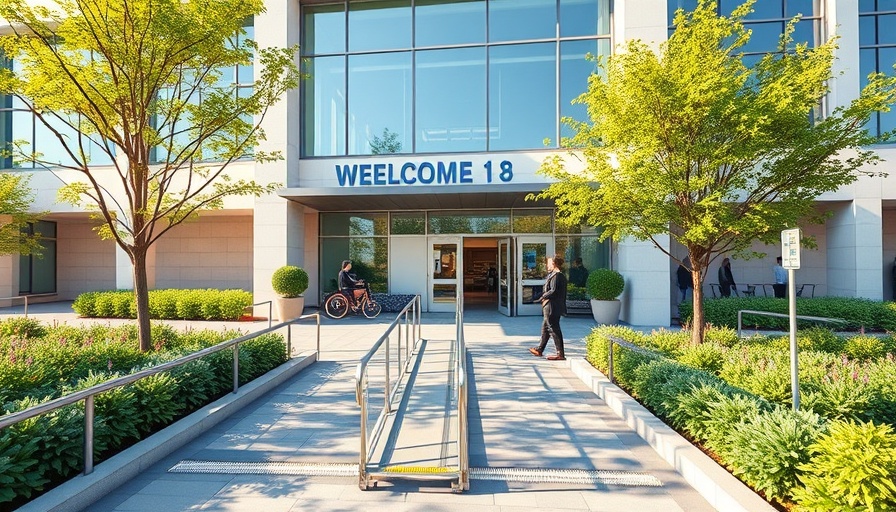
Ensuring Equality: The Importance of Wheelchair-Accessible Bathroom Standards in New Jersey
In an increasingly inclusive society, ensuring equal access for all individuals, particularly those with disabilities, is paramount. In New Jersey, legislation surrounding wheelchair-accessible bathroom standards plays a crucial role in the lives of those with mobility challenges. This article delves into the specific standards established in the state, underlining their importance and implications for public facilities.
Historical Context of Accessibility Standards
The journey toward accessible public spaces has been gradual but transformative. Historical milestones, such as the Americans with Disabilities Act (ADA) enacted in 1990, have been pivotal in shaping public policy towards inclusivity. In New Jersey, the incorporation of the ADA's guidelines into the state-specific New Jersey State Uniform Construction Code (UCC) reflects a commitment to ensuring everyone can navigate these spaces safely. As a result, the landscape for wheelchair-accessible facilities is ever-evolving, aiming for a future where equality is the norm.
The Legislation: What You Need to Know
Accessibility standards in New Jersey are grounded in both state and federal laws, blending the ADA's framework with the UCC to create clear and actionable standards. According to these regulations, restrooms classified as wheelchair-accessible must meet certain technical requirements, including appropriate fixture heights and minimum clearances. Compliance is not just about following legal guidelines; it emphasizes the dignity of every individual and fosters an environment of acceptance and support.
Designing for Accessibility: Key Elements
Design requirements for wheelchair-accessible bathrooms include ample space for maneuverability, proper fixture placement, and accessible entrances. Clear floor space of at least 60 inches in diameter is essential to allow comfortable navigation of mobility devices. Additionally, toilet heights must fall between 17 and 19 inches, which is crucial for ease of use, while strategically placed grab bars enhance safety and independence. Recognizing these key aspects during the design phase facilitates an inclusive environment that addresses diverse needs.
Compliance: A Moral and Legal Responsibility
Adhering to the established standards is not merely a legal obligation; it also reflects a moral commitment to equity. Property owners who neglect these requirements may face severe repercussions, including hefty fines and potential lawsuits. More importantly, failing to provide accessible facilities adversely affects the lives of individuals who depend on such accommodations, underscoring the need for actionable compliance measures that promote dignity and respect for all.
Common Misconceptions About Accessibility Regulations
One common misconception is that compliance is a burden with little return on investment. In fact, creating accessible bathrooms not only opens doors for individuals with disabilities but also attracts a wider customer base, fostering a supportive community. Moreover, embracing accessibility can enhance a facility's reputation, proving that inclusive services create a better experience for everyone. Understanding these benefits helps shift perspectives toward inclusivity, making it a priority rather than an afterthought.
Practical Tips for Homeowners and Facility Managers
For homeowners and facility managers, awareness of accessibility standards is vital in promoting inclusivity. One key action is to conduct regular assessments of existing restrooms to identify compliance gaps and necessary modifications. Consider consulting with professionals who specialize in accessible design to ensure that your renovations align with current standards. Additionally, training staff to understand the importance of accessibility creates a culture of empathy, ensuring that everyone feels welcome.
Actionable Insights and the Path Ahead
As we move forward, the conversation around accessibility must continue to evolve, calling for advocacy and engagement from the community. Collaborating with disability advocacy organizations can provide valuable insights into the specific needs of individuals. Additionally, encouraging community feedback on accessibility can help identify areas for improvement and inform future design considerations. Ultimately, continuing to focus on accessibility creates spaces that honor every individual's right to enjoy public amenities.
In fostering equitable restroom designs, we do not just comply with standards; we embrace a vision of inclusivity that resonates throughout society. To learn more about enhancing the accessibility of your facilities, reach out to local experts in your area!
 Add Row
Add Row  Add
Add 




Write A Comment